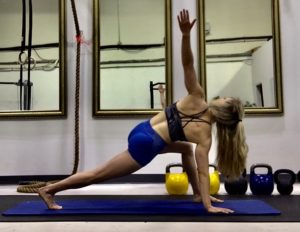
Flexibility Training
Flexibility training offers so many benefits. However, many people skip it entirely even though it could be the missing link in their fitness routine.
Benefits of Flexibility Training
Flexibility training delivers many tangible benefits. Here are some of the reasons you should implement flexibility training into your fitness routine.
- Helps Restore Muscle to Resting Length
- May Reduce Injury Risk
- Improves Posture and Alignment
- Free and Easy to Implement
- It Just Feels Good
Despite these benefits, few people take the time to stretch. Here are some tips to get you started with flexibility training.
Perform Flexibility Training Regularly
Many people perform flexibility training infrequently or not at all, or worse, too much too soon.
To really reap the benefits of flexibility training, make sure you make it a consistent habit. You can schedule it at least twice per week so you do not forget to do it. Stretching two to three times per week is necessary to improve flexibility.
Perform an Aerobic Warm up First
Prior to your flexibility training, you should perform some type of aerobic warm up. Stretching cold muscles is not as effective or safe. So make sure you warm up to stretch by taking your body through some kind of aerobic exercise for at least five minutes. You could try jogging, skipping rope or performing a quick full body circuit first.
Conversely, you could perform your flexibility training at the end of your workout when your muscles and joints are already loose and pliable.
However, there is one time you should not hold static stretches for an extended time. That is before a heavy workout, running or playing sports. Static stretching could reduce power output for those activities. It is best to save the static stretching for its own session or after a workout.
Hold Stretches for 15-30 Seconds
Try to hold your stretches for 15-30 seconds each. If you hold stretches for less than 15 seconds, you may not improve flexibility as much, and stretches longer than 30 seconds produce limited additional returns on your time investment.
No Pain, No Strain
When it comes to flexibility training, you should aim to feel mild discomfort, but not pain. If you are feeling pain, you actually are stretching too aggressively. Stretching to the point of pain does not improve flexibility more than just uncomfortable stretches, but it does increase the risk of tissue damage.
Incorporate a Variety of Stretches
Make sure you incorporate a variety of stretches that train all the major muscle groups. Also include some stretches that target one side at a time, to help determine if you have any imbalances that could lead to injury!
Here is a great resource that includes many different full body stretches.
Try Different Modes of Flexibility Training
You can incorporate different types of stretches besides static stretches (holds) for 15-30 seconds.
You can also try:
- Dynamic Stretching
- Passive Stretching
- PNF Stretching
- Ballistic Stretching
Let’s take a look at each of the different types of stretches.
Dynamic Stretching
Dynamic Stretching is a type of stretching including quick movements that take joints through a full range of motion. Examples include leg swings, shoulder circles and windmills. This type of stretching is perfect before a workout because it won’t affect power, strength or speed.
Passive Stretching
Passive stretching is a completely passive workout. A partner helps you to stretch by moving your joints through a full range of motion. This type of stretching is relaxing and enjoyable!
PNF Stretching
PNF stands for proprioceptive neuromuscular facilitation. This type of stretching involves a partner helping you to stretch while you also combine static holds or dynamic contraction through a full range of motion. This type of stretching is the most intense form and might not be best for beginners.
However, experienced athletes can achieve increased flexibility with PNF stretching.
Ballistic Stretching
Ballistic stretching combines static stretching with bouncing to achieve a greater stretch. Proceed with caution and do not perform ballistic stretches on any (previously) injured areas.
Flexibility Training Final Thoughts
Hopefully this article encouraged you to start a flexibility program. Flexibility training has so many benefits and is an accessible form of exercise for everyone.
If you enjoyed these tips, please feel free to share a comment below on your favorite ways to stretch or some of the benefits you have experienced since starting a stretching routine!